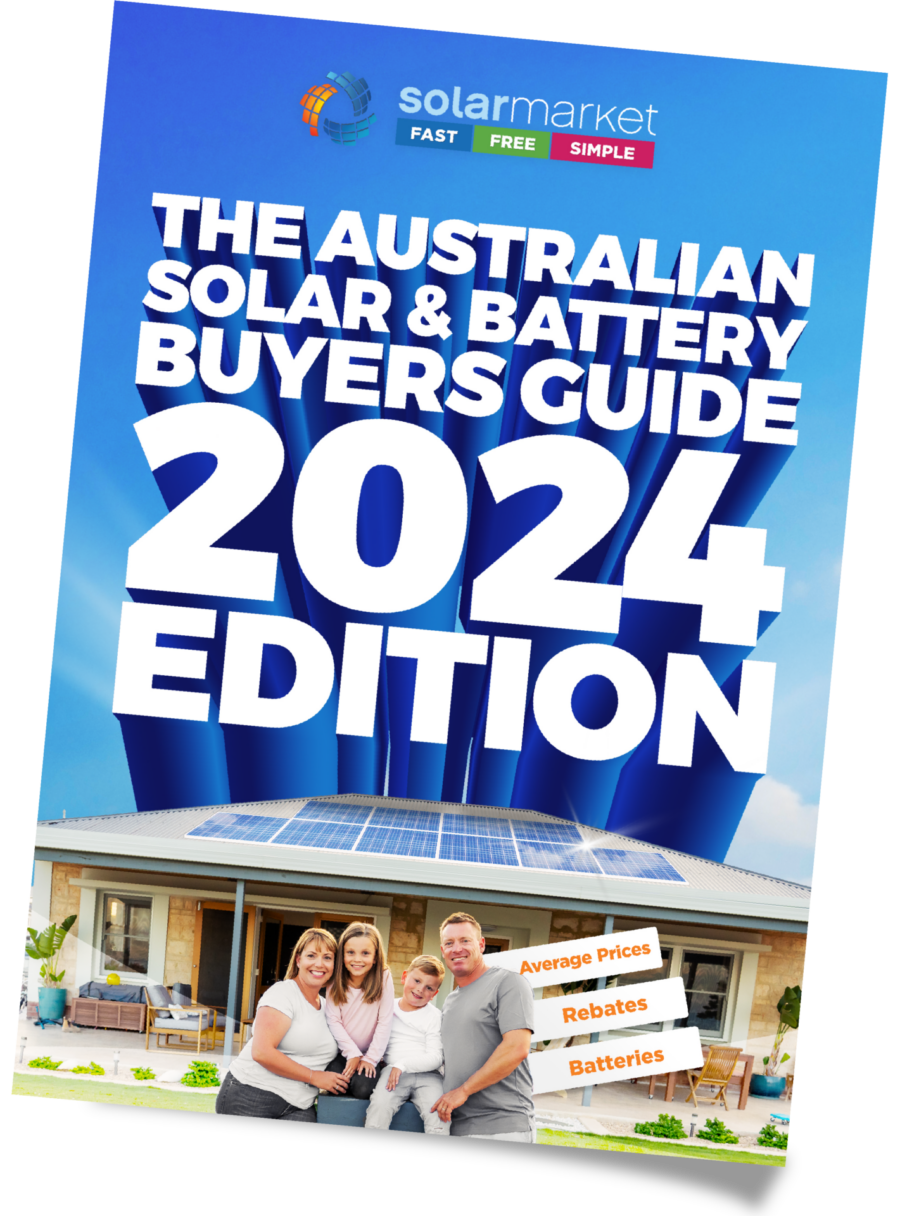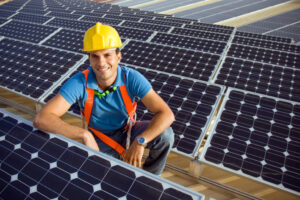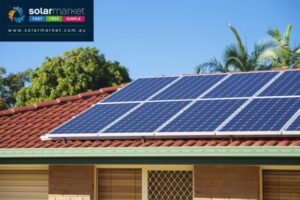Across Australia installing a solar system has become increasingly more accessible, affordable and therefore more common in recent years. In fact, if you were to drive around your surrounding streets and suburbs, you should be able to spot at least some, if not many solar panels on the roofs you come across.
While many people might understand the concept that solar panels use sunlight to create energy that appliances can use to run, thus reducing electricity bills, they aren’t aware how a solar panel system works. To be able to comprehend this you must first know the process of a solar panel system and the components used… yes there’s more than just the solar panels.
How a solar PV system works
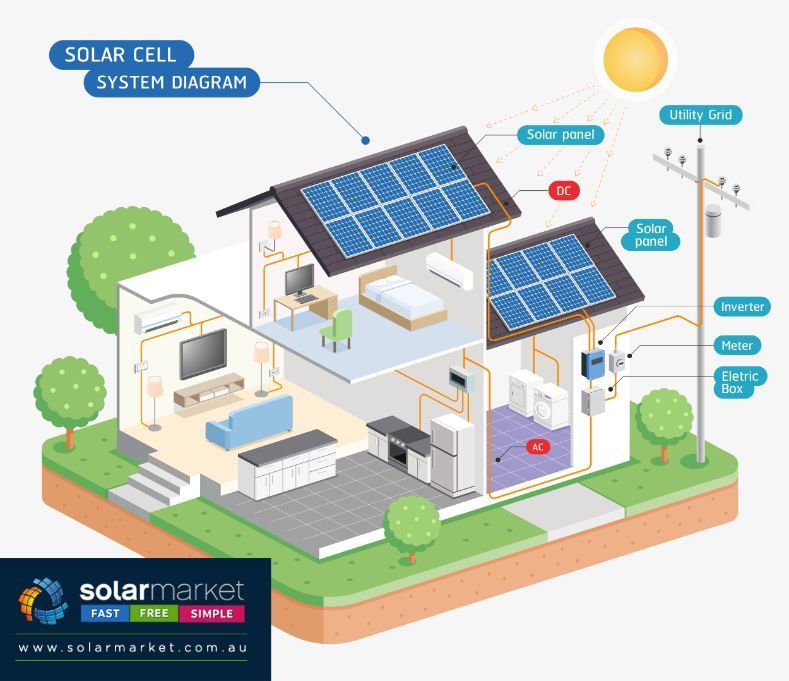
A solar system’s functional purpose is to convert sunlight into electricity using solar panels and other various components.
Solar PV systems installed at a home will typically have solar panels mounted on the roof to receive maximum exposure to sunlight. The solar panels absorb the sun’s rays which they convert to Direct Current Energy. The Direct Current (DC) Energy is then converted into Alternating Current (AC) Energy once fed through the solar system’s inverter. Once converted to AC electricity a household will run off this instead of energy from the electricity grid or battery.
A house that has a grid connected solar system will pull from the electricity grid as a secondary source of electricity, if the solar system is not producing enough energy. A household that has an off-grid solar system will pull from a generator or battery as a second source of electricity.
Note: A grid connected system can also have a battery installed depending on what inverter the solar system has.
Grid-connected solar systems with or without battery are the most commonly installed solar systems due to affordability and practicality, however there is the possibility to go completely off-grid with an off-grid solar system which you read about here.
Components of solar installation
Solar panels
When you have several solar panels as part of your solar system they are referred to as a Solar Array. As mentioned earlier the solar array’s job is to absorb energy from the sun and convert this energy (sunlight) into Direct Current electricity (DC electricity). This DC energy is then fed into the inverter. The larger the solar system and the more panels that make up your solar array, the greater the amount of energy the solar system can produce.
When deciding on solar panels you’ll have three different makes to choose from; Monocrystalline, Polycrystalline and Thin Film, however quality, efficiency and warranty is the most important criteria to research when selecting panels.
Solar inverter
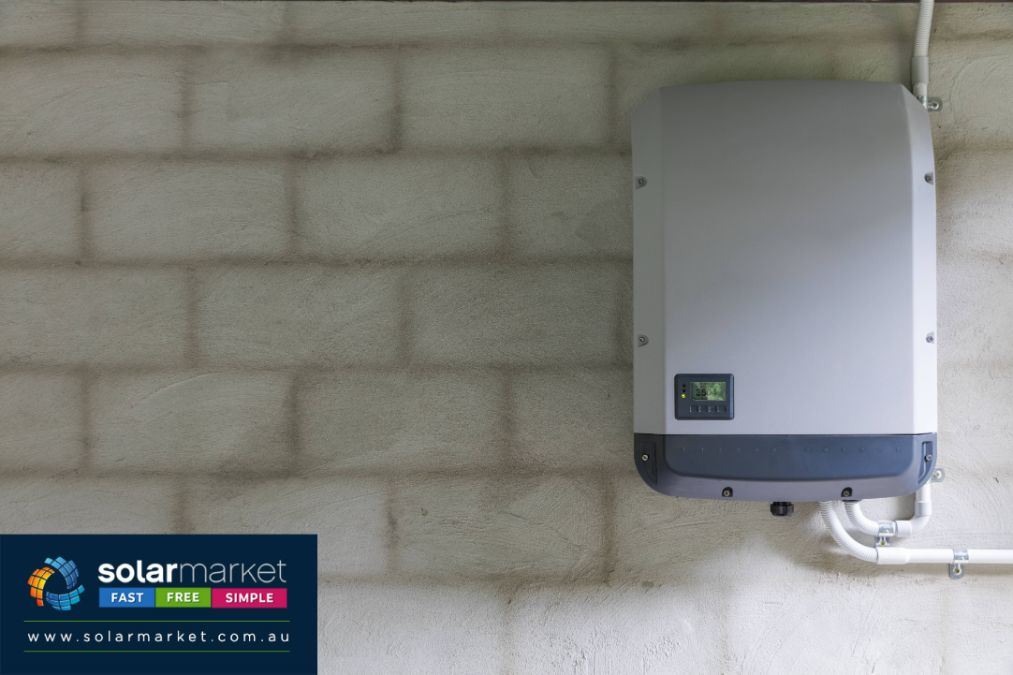
The inverter is the brain of a solar system and has the role of converting DC energy that is received from the solar panels into AC electricity, which is fed through the switchboard for a household to run off this electricity.
There are different types of inverters available which can perform additional functionalities that a standard inverter does not. This can include feeding excess energy produce into battery storage (Hybrid Inverter) or optimising singular panels (Micro Inverter).
Inverters require more maintenance than solar panels do, due to them constantly running and converting energy, which can cause them to overheat if not properly maintained.
Switchboard
The switchboard’s purpose is to receive the AC electricity from the inverter and feed it into the household’s circuits and appliances.
Solar meter
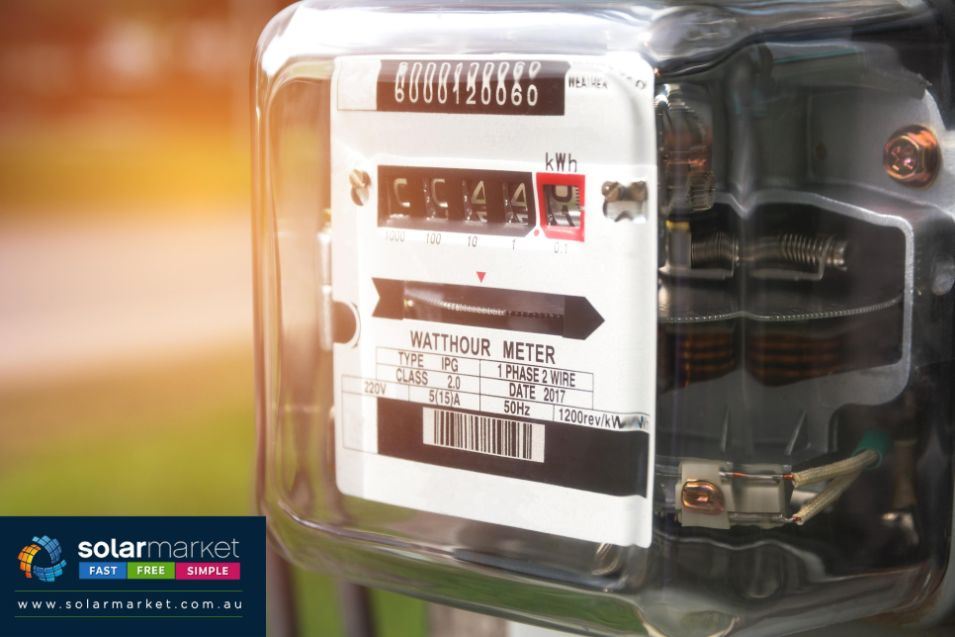 A solar meter, also referred to as a smart meter measures the electricity flow that your home exports and imports to the grid.
A solar meter, also referred to as a smart meter measures the electricity flow that your home exports and imports to the grid.
If the solar system is not generating enough energy for a household to run, electricity is pulled from the electricity grid as a second source of energy.
In the instance you have excess energy, a grid connected solar system will send this energy to the electricity grid and the household will receive reimbursement in the form of a Feed-in Tariff on their electricity bill.
If a solar system has battery storage this excess energy will be stored in the battery instead of being exported to the grid.
Solar panel mounting system
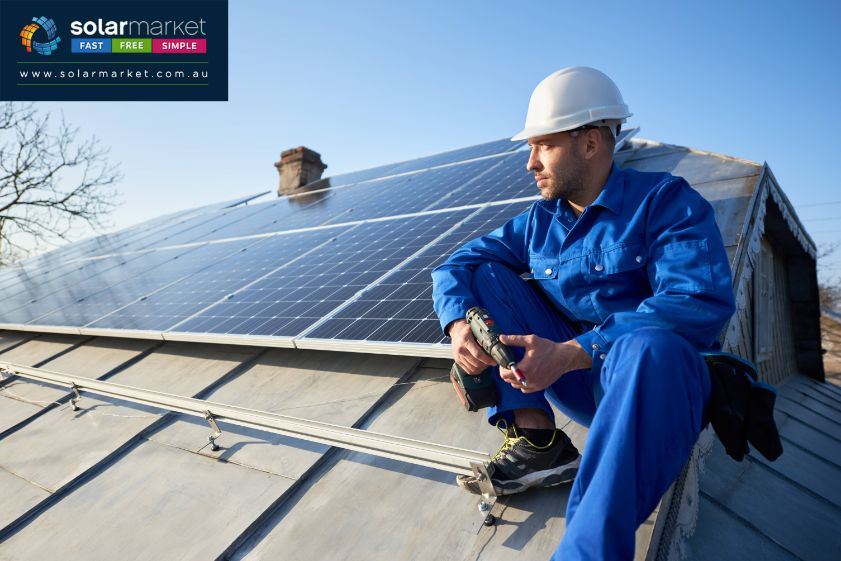 A mounting system, also referred to as a racking system is what physically fastens your solar panels to your existing roof. This is an integral component of a solar system and will ensure the solar array is securely affixed through rain, wind and hail.
A mounting system, also referred to as a racking system is what physically fastens your solar panels to your existing roof. This is an integral component of a solar system and will ensure the solar array is securely affixed through rain, wind and hail.
In some cases a solar provider may need to remove tiles on your roof to install the mounting system, however this is dependent on what roof style and make the household has.
Battery storage
Battery storage is an optional component for a solar system, however the uptake and installation of them is slowly becoming more common as the cost of batteries gradually decreases and the payback period becomes more practical to the average household.
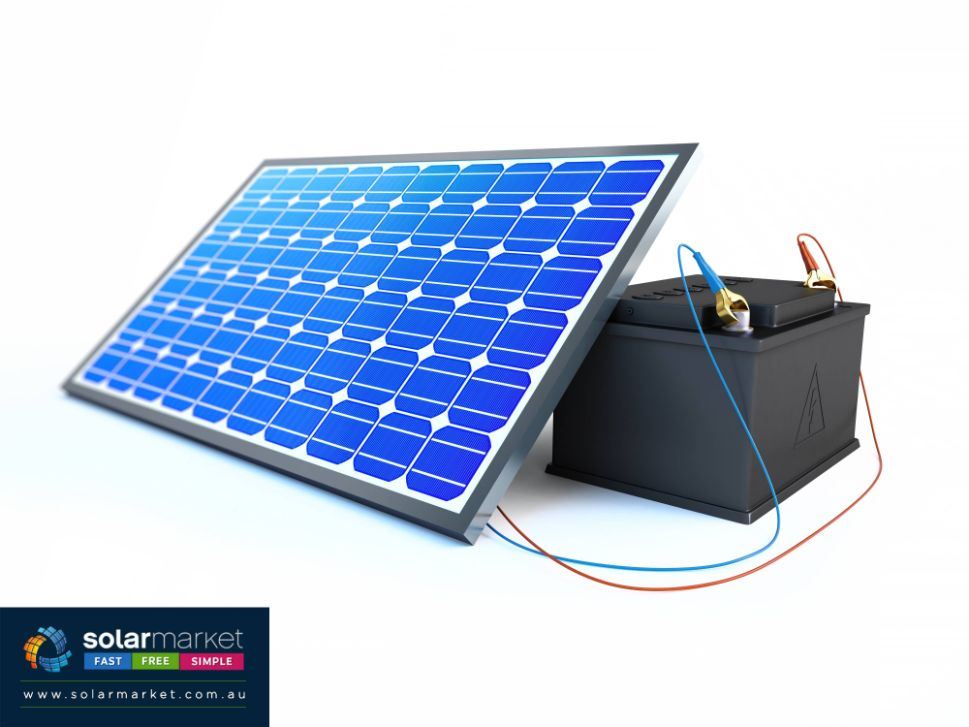
A solar system will charge a battery with the excess power the household has not used and store the power for use when the solar system is not generating enough or any energy.
Stored energy like this is typically used in the evenings or on overcast days when there is not enough sunlight reaching the solar panels.
Now you know all about the components that make up a quality solar system, why not find out the possible savings you could be making by installing solar!


